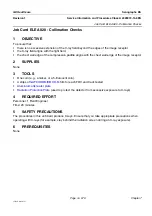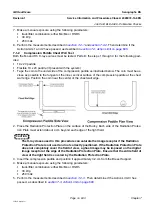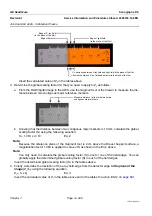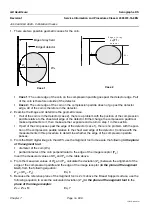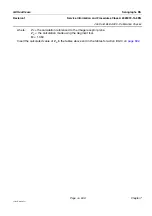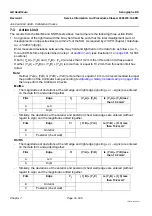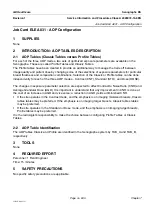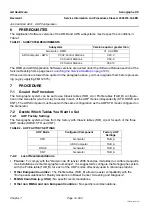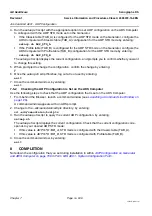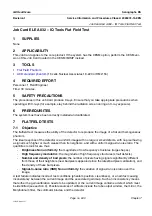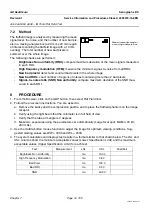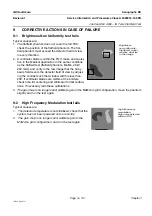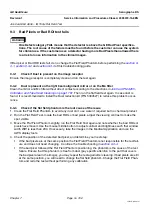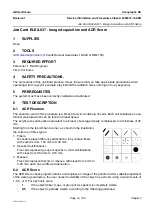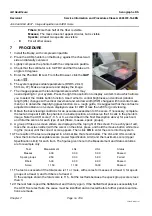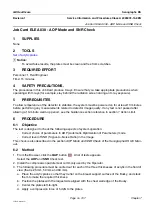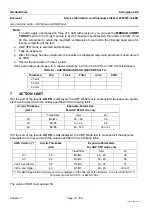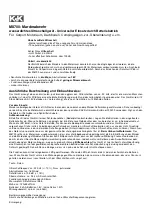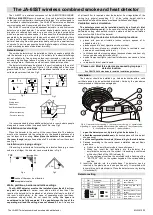
GE Healthcare
Senographe DS
Revision 1
Service Information and Procedures Class A 2385072-16-8EN
Job Card ELE A031 - AOP Configuration
Page no. 693
Chapter 7
JC-ELE-A-031.fm
Job Card ELE A031 - AOP Configuration
Chapter 7
1
SUPPLIES
None
2
INTRODUCTION : AOP TABLES DESCRIPTION
2-1
AOP Tables (Classic Tables versus Profile Tables)
For each of the three AOP modes, two sets of optimized exposure parameters are available on the
Senographe. These are called
Profile
Tables and
Classic
Tables.
The Profile tables have been created to provide an additional way to manage the trade off between
image quality and patient dose by changing some of the selections of exposure parameters for particular
breast thickness and composition combinations. Selection of the Classic or Profile tables can be done
independently for each of the three AOP modes - Contrast (CNT), Standard (STD), and Dose (DOSE).
The changes in exposure parameter selection are expected to affect Contrast to Noise Ratio (CNR) and
Average Glandular Dose (AGD). It is important to understand that any improvement in CNR is done at
the cost of an increase in AGD and vice versa; a reduction in AGD yields a diminished CNR.
•
If the site operates in the Contrast mode, and the emphasis is on imaging mid-sized breasts, Classic
tables tables may be preferred. If the emphasis is on imaging larger breasts, Classic tables tables
may be preferred.
•
If the site operates in the Standard or Dose mode, and the emphasis is on imaging larger breasts,
Profile tables may be preferred.
It is the radiologist’s responsibility to make the choice between configuring Profile Tables or Classic
Tables.
2-2
AOP Table Identification
The AOP tables Classic and Profile are identified in the Senographe system by TAB_A and TAB_B,
respectively.
3
TOOLS
None
4
REQUIRED EFFORT
Personnel: 1 Field Engineer
Time: 15 minutes
5
SAFETY PRECAUTIONS
No specific safety precautions are applicable.

